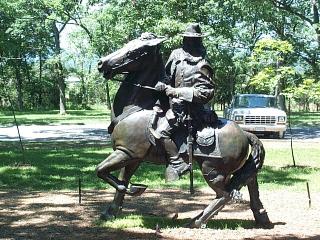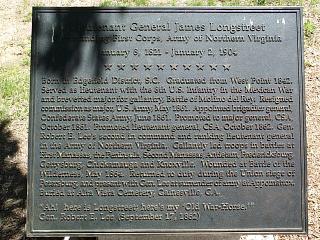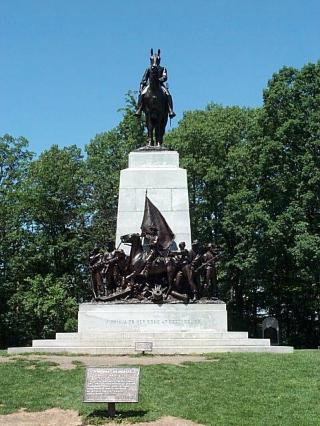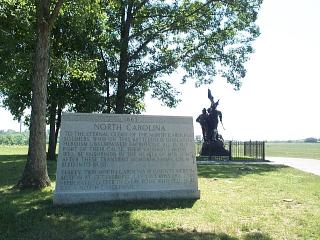

 The night between the second and third days of the Battle of Gettysburg, General Lee had to decide what to do next. He had four choices; retreat, maneuver, defend, and attack. The biggest factor in Lee's plans were that he had not heard from General Stewart's cavalry in over a week. The cavalry today and then are the eyes and ears of the army. Without the cavalry the army is blind. Lee's supply train was over 40 miles in length and he had no cavalry to protect it. That and there was only one road out of Gettysburg, the narrow Chambersburg Pike. Retreat was not an option. Longstreet had been asking for a maneuver for a couple of days, was that possible? Again the cavalry was not present and Lee had no idea what lie on the roads south of Gettysburg and General Ewell did not want to make a move with his Corps from the Confederate left to the right, "This would give up the town and hurt morale," said Ewell. Maneuver was out. Union General Meade was new to command, and would certainly be cautious. Meade was likely to stay on the defensive for a while, at least until the politicians in Washington got tired of it and forced him to attack. But that would take some time. No point in going on the defensive just yet. We have to remember that the goal of the Gettysburg Campaign for the south was; to take the war to the north, fight and win a decisive battle on ground of Lee's choosing. Lee had not chosen this ground but there was the entire Union Army right in front of him. One decisive victory could bring Washington to the peace table and end the war. He might not get this opportunity again, Lee must attack! Lee's plan was to have Ewell's Corp, on the left now reinforced by Johnson, attack Culp's Hill, while two of Longstreet's divisions, McLaws and Hood, attacked from the right. These two attacks would begin at dawn and attack nearly the same places as the day before. As sometimes happens plans don't always go as planned. At 4:30am the Federal 12th Corps now reinforced with elements of the 1st Corps attacked the Southern forces on Culp's Hill in an attempt to retake the positions that they had lost the day before. At about this time or slightly later Longstreet reported to Lee that there was a strong Union presence on his right, Longstreet believed it to be a Corps it was actually just a Cavalry Brigade, making the ordered attack dangerous as his forces would have an enemy that could fire on his forces front and rear during the ordered attack. Lee had to change his plan. In the previous fighting Lee's army had attacked both flanks of the enemy, surely the flanks would be heavily reinforced by that morning. Reinforced from where? The center of his lines! This must be where the Federal Army was weak.  The center of the Union lines was the "Copse of Trees" on Cemetery Ridge in the center of the above picture. Lee took two divisions from General A.P. Hill and one unused by Longstreet and put them under the command of the later. Their task was to break through the center of the Federal Army. General Longstreet argued the same thing that I might have given the same task. The enemy by virtue of his position has internal lines of communication, making reinforcing the threatened area easy. Meanwhile Longstreet's charges would have to walk through nearly a mile of open terrain exposed to cannon and rifle fire. This to Longstreet and to me does not sound wise. Lee insisted that the enemy was weak in the center, that the south had to have a win here at any cost. Lee would not relent, orders are orders after all, Longstreet against his better judgement complied.   The monument to Longstreet.Poor "Old Pete" Longstreet. He became the scapegoat after the Civil War for many of the Confederate Army's failures. It didn't help his cause that he became a Republican after the war. The Republicans were the party that passed the bill making slavery illegal. Which didn't make them popular in the south! Longstreet had been friends with U.S. Grant before the war and renewed the friendship afterwards. Longstreet received a political appointment from President Grant as minister to Turkey, furthering his unpopularity. The three divisions that Longstreet would command that day were largely made up of units from Virginia and North Carolina. The three division commanders were Major General George E. Pickett, Brigadier General James Johnston Pettigrew, and Major General Issac Ridgeway Trimble.  The Virginia Monument The North Carolina MonumentThe North Carolina Monument is the work of sculptor Gutzon Borglum who also sculpted Mount Rushmore. | ||
 |

|
|